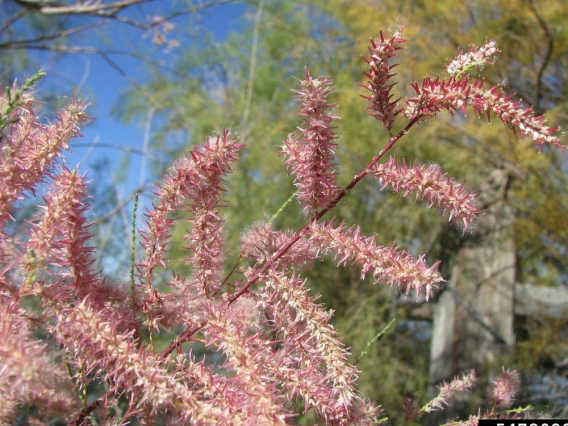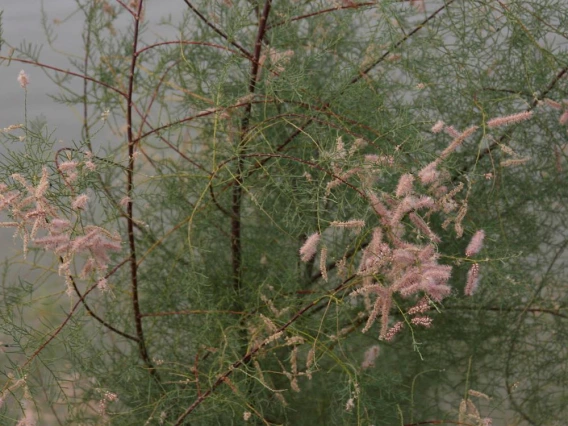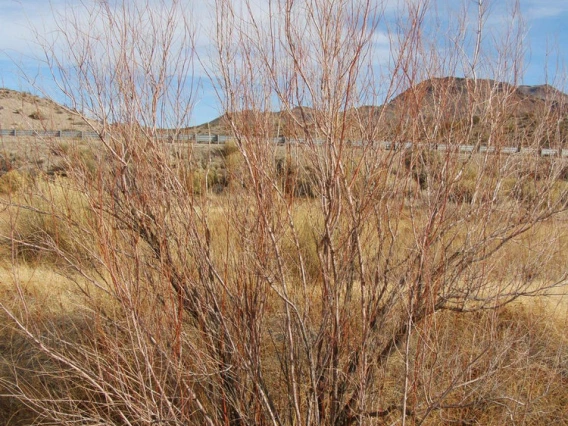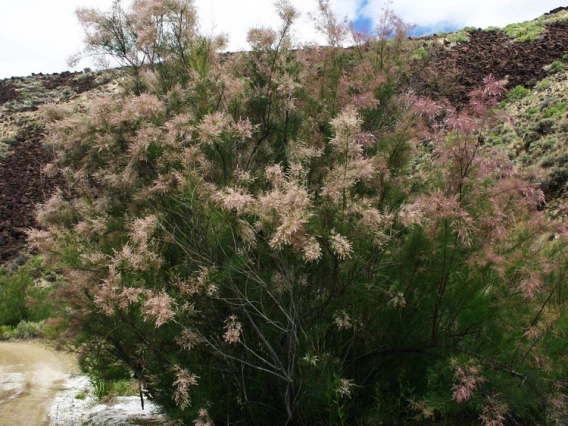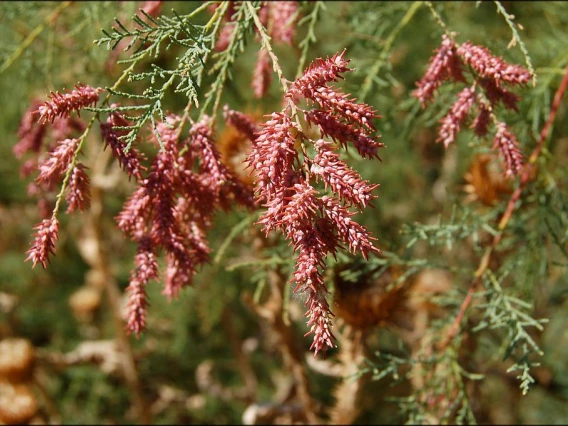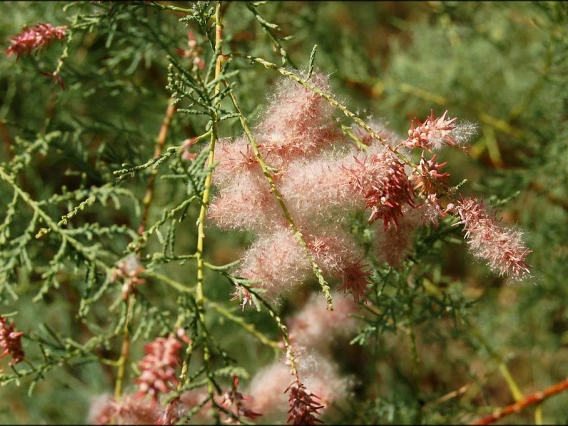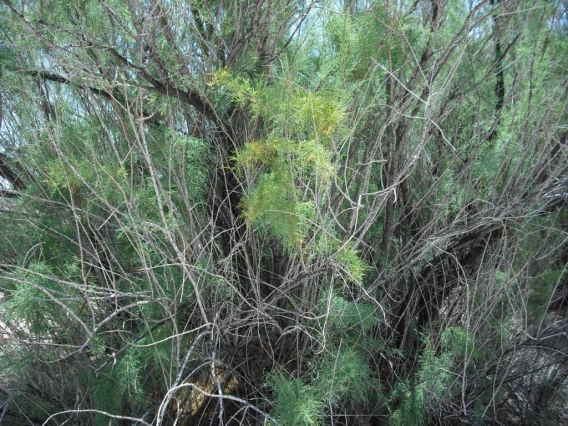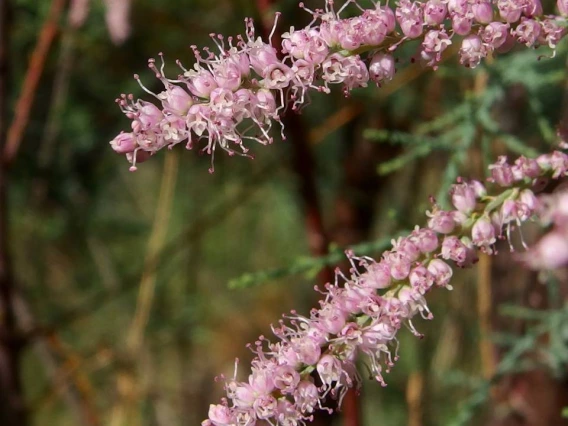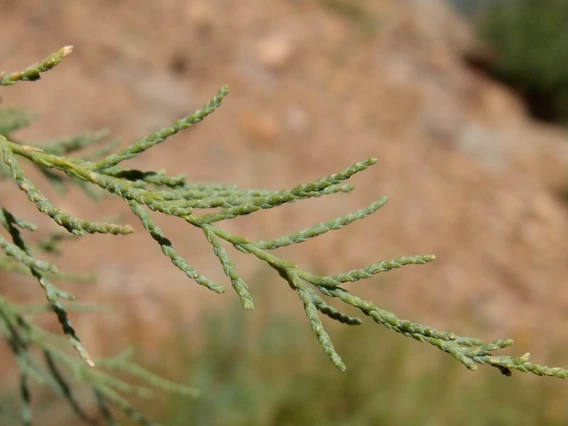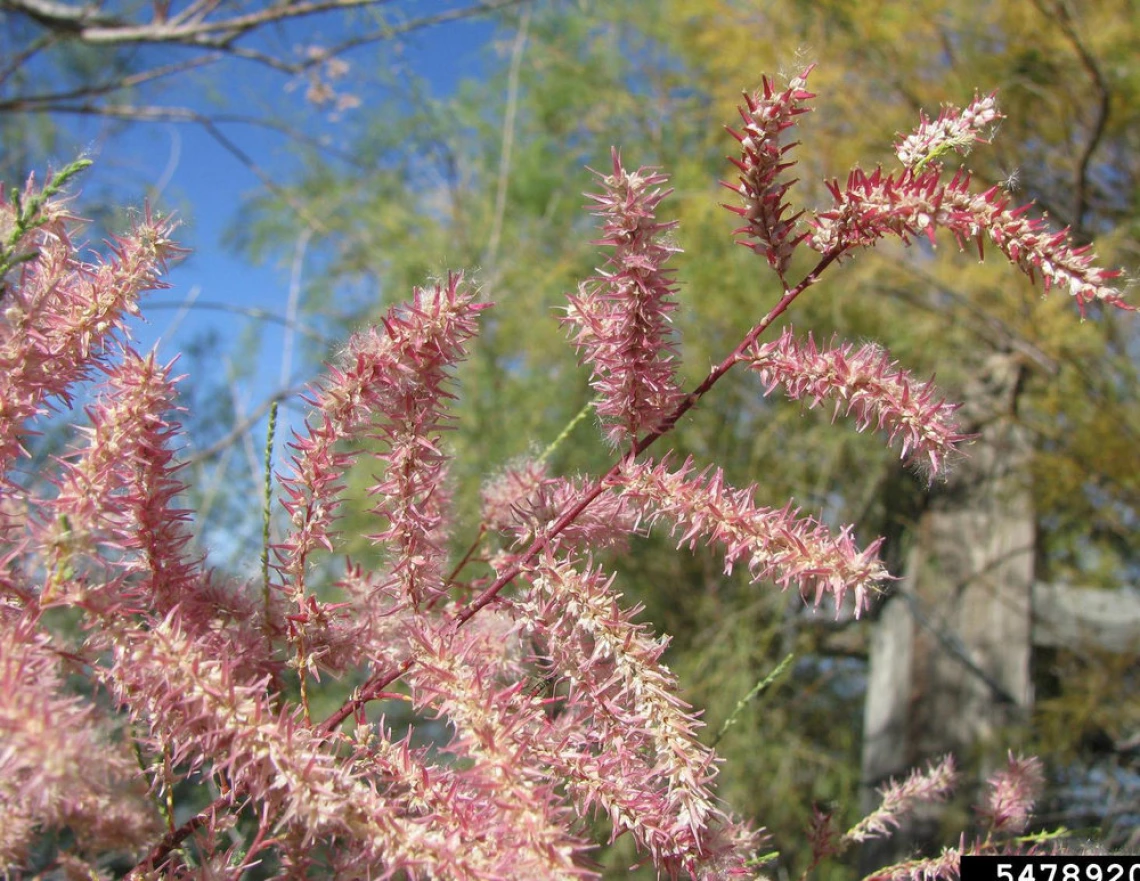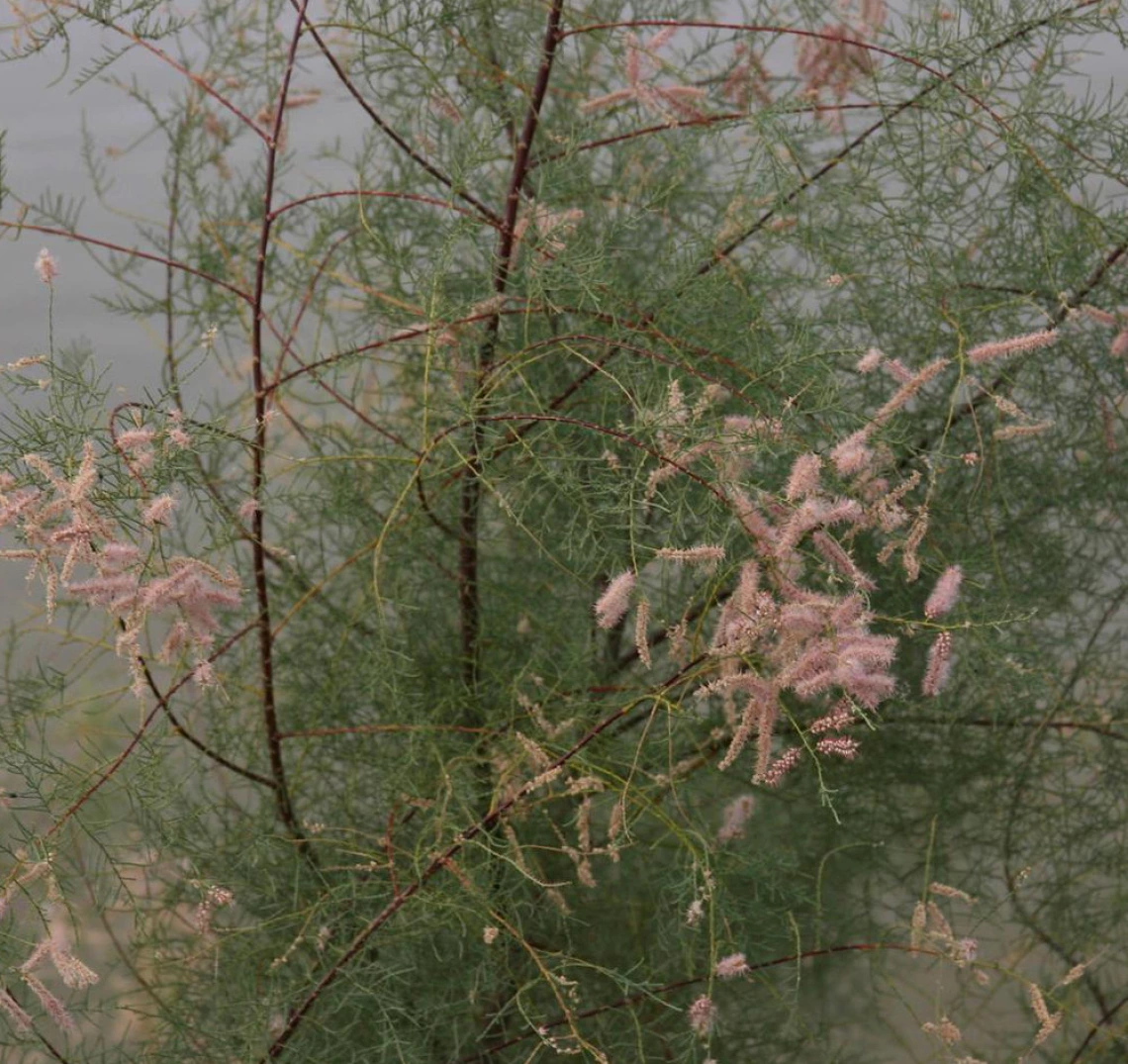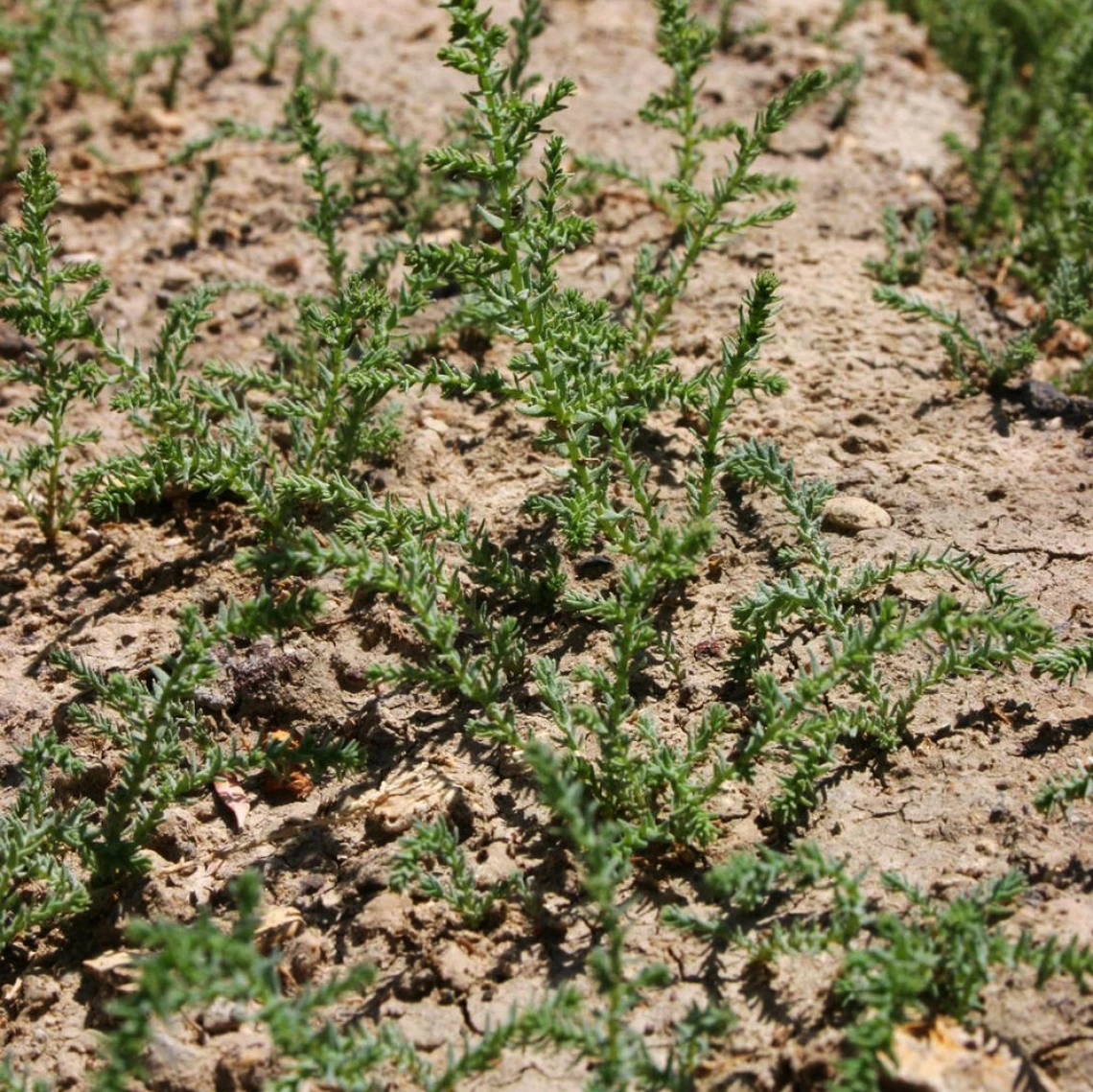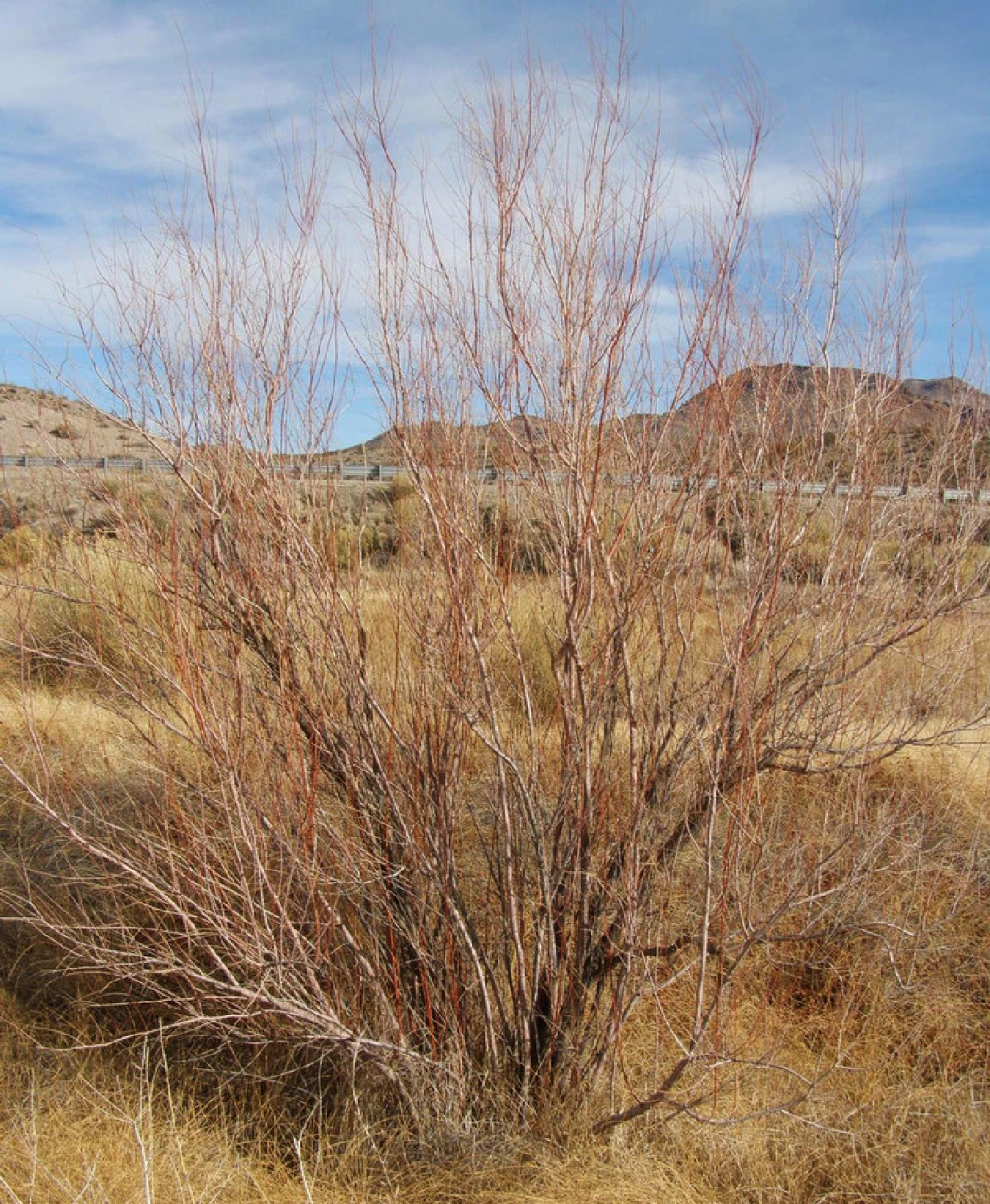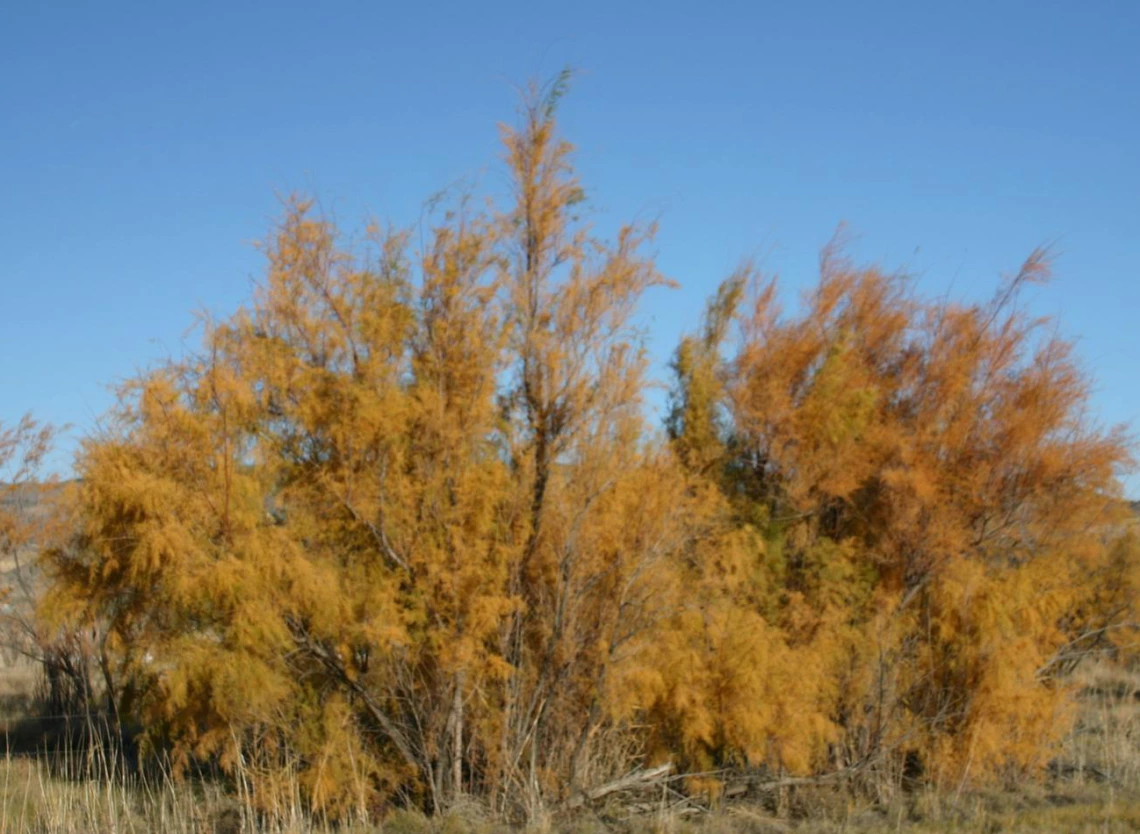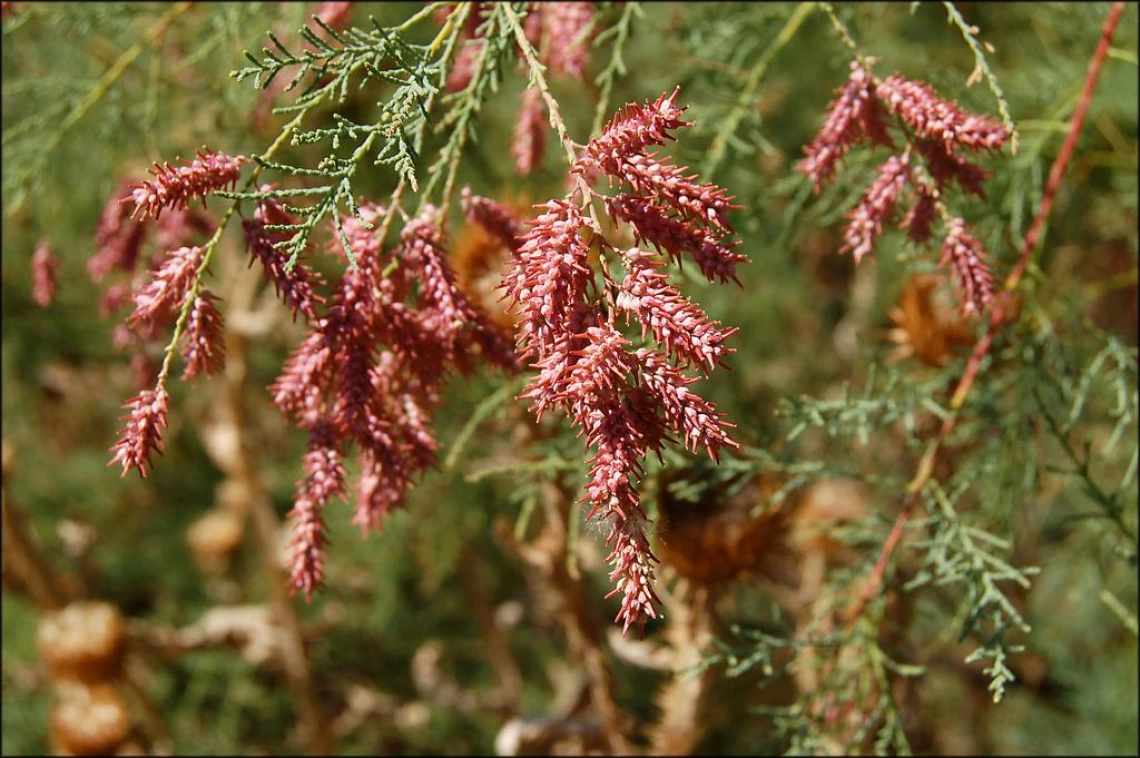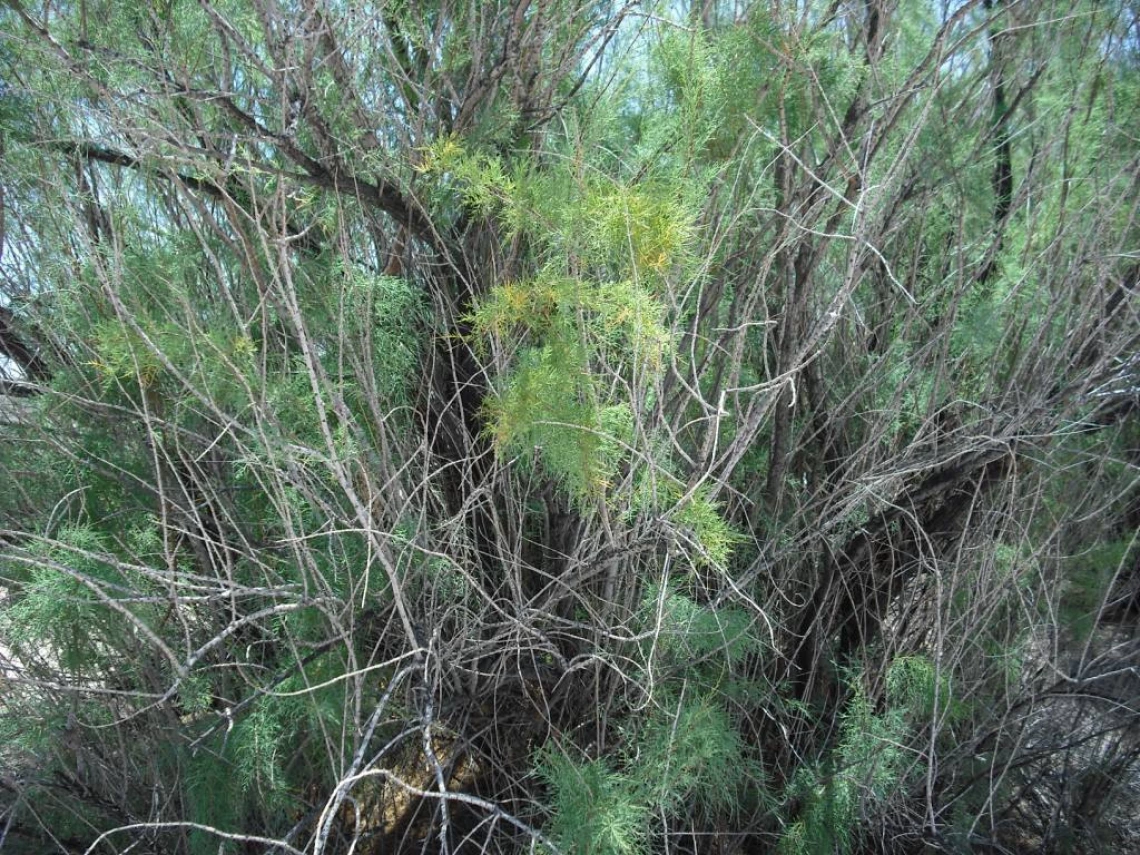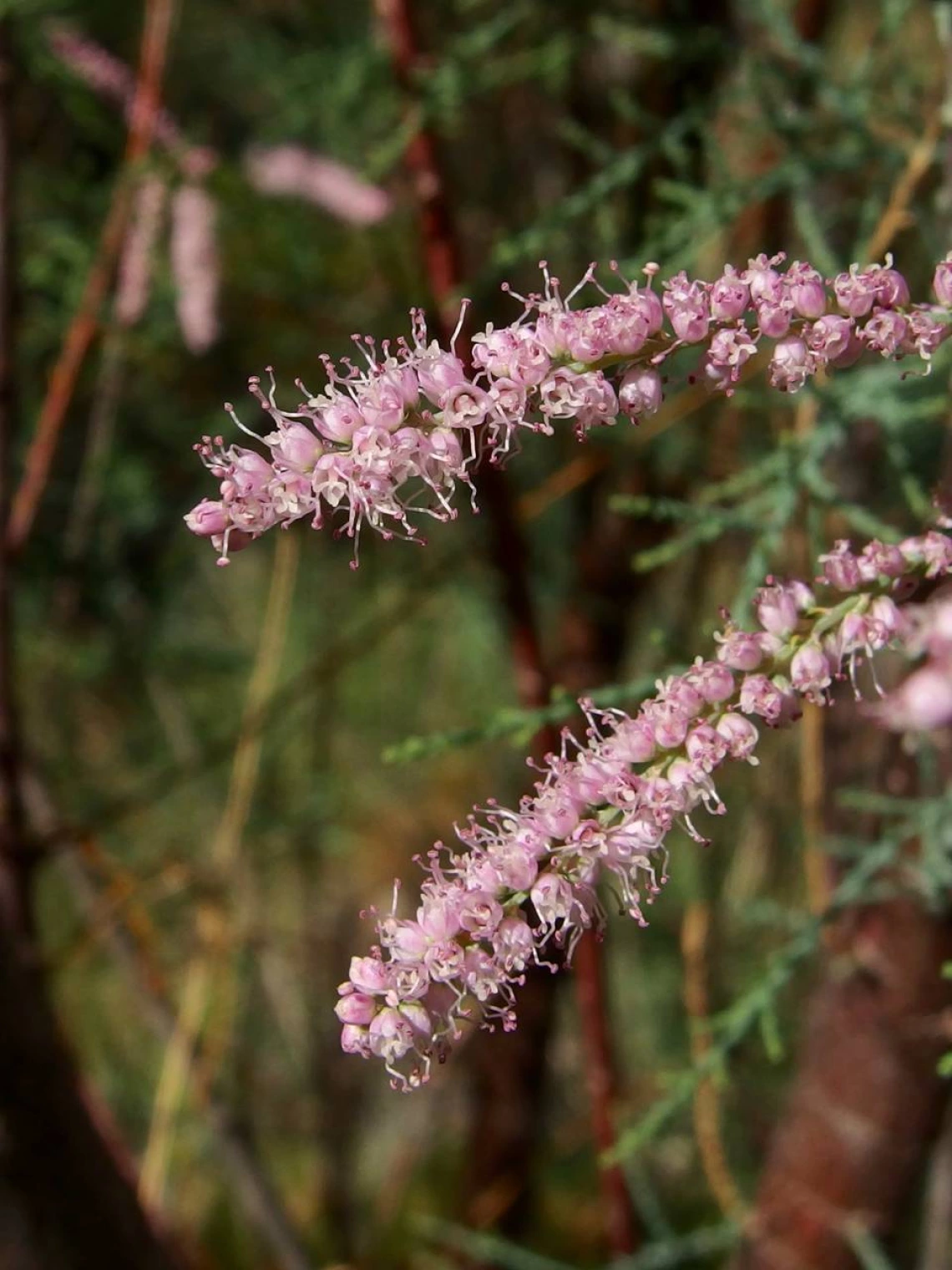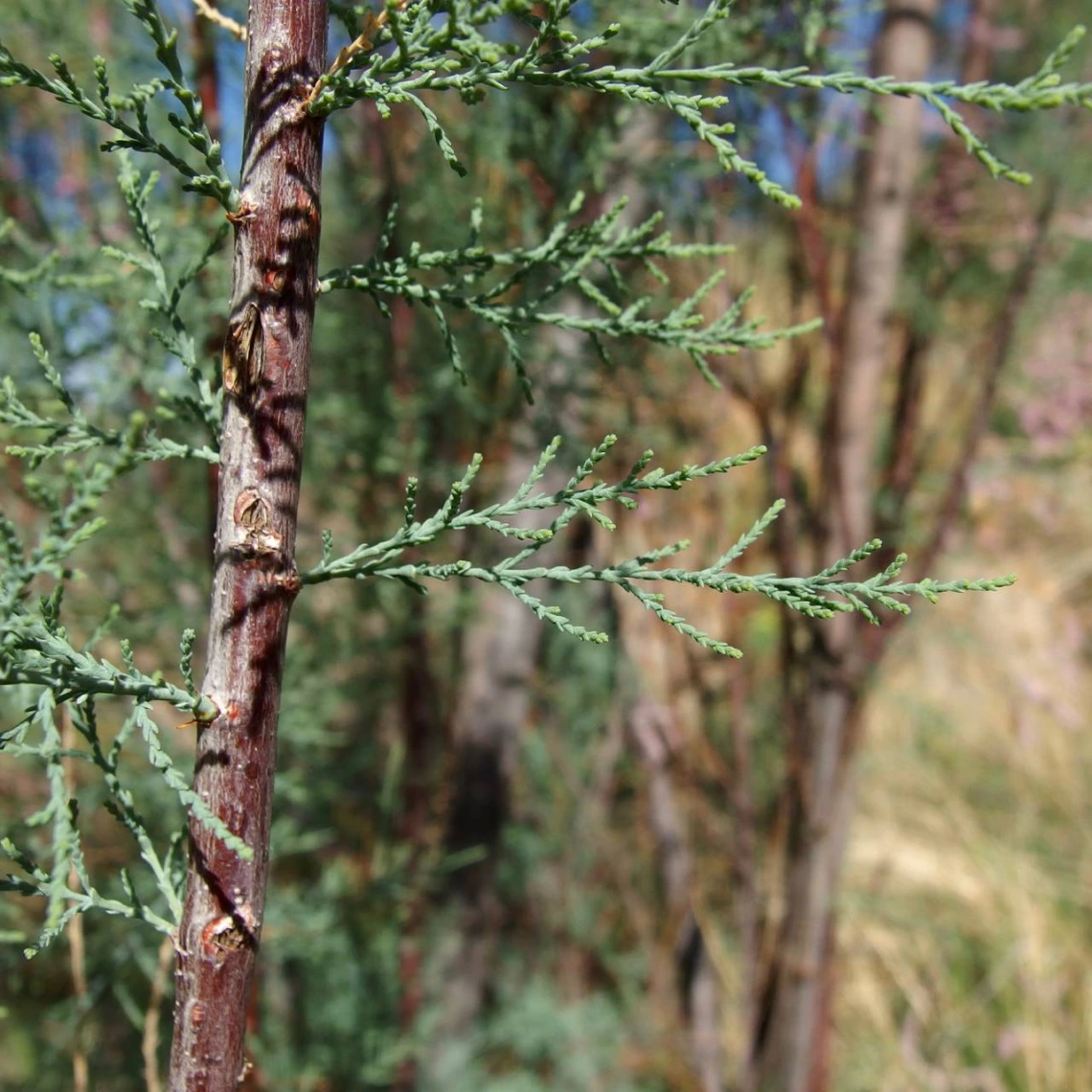Image

Tamarisk with flowers
Eric Coombs, Oregon Department of Agriculture, Bugwood.org
Common Name(s)
Tamarisk
Saltcedar
Scientific Name
Tamarix ramosissima
Tamarix chinensis
Family
Tamarisk family (Tamaricaceae)
Reasons for concern
Tamarisk often grows in impenetrable thickets along waterways, especially those that are dammed upstream cutting off the natural spring floods that promote native tree populations and becoming a wildfire hazard. It holds salt in its tissues, so fallen leaves increase soil surface salinity making it difficult for native plants to establish. Native plant and bird species, such as the southwestern willow flycatcher and their related pollinators, have been displaced from native populations. Dense populations change water flow, widening floodplains by catching sediment and lowering water tables. It offers little food to wildlife. Dense stands support lower biodiversity than the native communities they displace. They have severely limited the number of germination sites that are suitable to cottonwood and other riparian species leading to a decline in native cottonwood populations.
Classification
Non-native. Included on the Arizona Noxious Weed List as a Class C noxious weed, which means it is widespread and “may be recommended for active control based on risk assessment.”
Botanical description
Small deciduous, dense, wispy, spreading, loosely-branched tree or shrub.
Leaves
Needle-like leaves, similar to cedar or juniper tree.
Stem(s)
Usually 10 to 15 feet tall, sometimes taller. Can have multiple trunks. Highly branched. Branches smooth, hairless, reddish brown and appear jointed. Can grow many feet tall in one season.
Flowers
Pinkish-white to pink petals in dense clusters of 2-inch long slender spikes. Abundant April through August.
Seeds
Small, wind-borne cottony seeds
Roots
Long taproots
Native to
Eurasia
Where it grows
In the Western U.S. along streams and rivers, in some wetlands, along shore lines of reservoirs and ponds.
Lifecycle
Perennial
Reproduction
By seed and vegetatively
Weedy Characteristics
Re-sprouts after damage to the crown, stems, roots and root pieces. Robs other plants of water. In many places, their dense stands have replaced cottonwoods, willows, and other native riparian vegetation.
Control Strategies
Hand pull seedlings. After taproots are established, machines and chemicals may be effective. Research is being done on biological controls. USDA began introducing leaf-eating beetles (Diorhabda elongata) in 2007 to reduce populations. Beetles defoliate Tamarisk trees throughout the growing season. It can often take more than one year for shrubs to die. Fires don’t work, since this is a fire-adapted species and will re-grow after fire. Professional removal may be required. Only herbicides approved for use in aquatic environments should be used. Contact your local county extension office for more information on chemical control.
References
- Tamarix spp. California Invasive Plant Council
- Tamarisk Saguaro National Park, National Park Service
- Salt cedar Plant Conservation Alliance’s Alien Plant Working Group
- Why not Russian-olive and Saltcedar? Idaho Fish and Game


